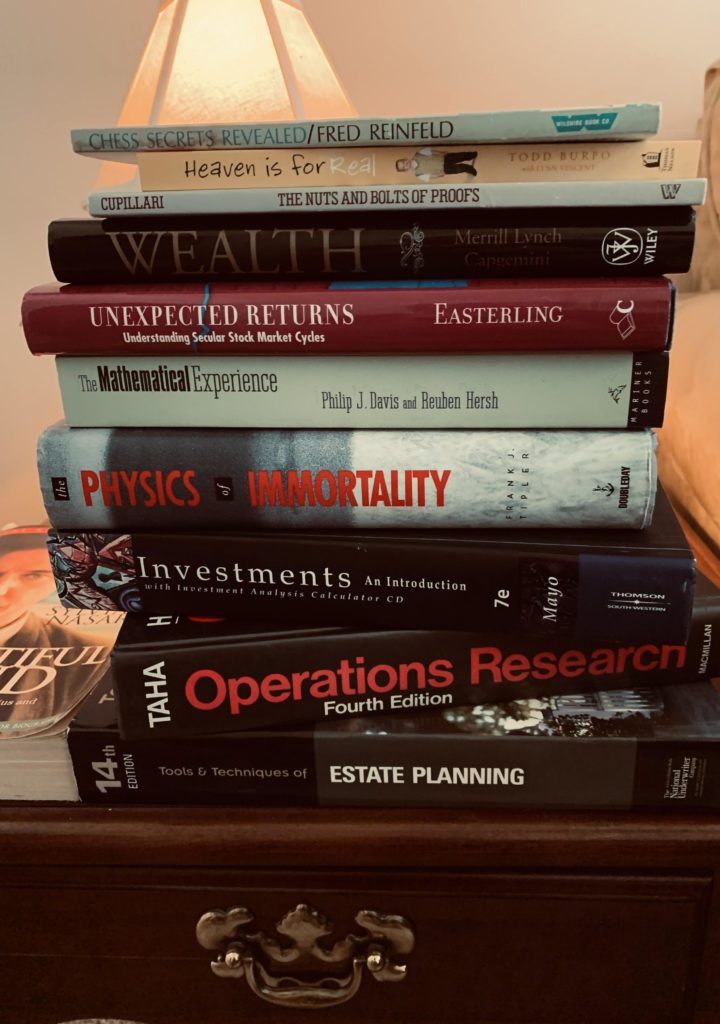A couple of you wanted to hear another opinion on this subject. First of all, the Bond market is in many ways more complicated than the stock market ever thought about being, it’s just that bonds prices fight different demons than stocks face. In order to make this as brief as possible, I’m going to leave out 90% of what you could be learning about the U.S. bond market, in order to expedite the relevant idea I want you to take away. I was working for a guy who owned an establishment back in the mid 90’s, wasn’t there long. Turned out he had accumulated a decent amount of assets on his own. One day I got a call from his assistant, she says, “James wants to see you in his office”. So I tottled down there, he and I had had some previous conversations involving security analysis but always on stocks, never bonds. He would pick my brain because he knew I had completed an M.A. in Economics just a few years earlier. I wandered in and sat down, he turns around behind his big desk and says, “Can you tell me who sets the level of interest rates (in the U.S.)?” I answered, “yes, but it depends on whether you’re talking short-term or in the long(er) term?” I explained in brief that the Federal Reserve Board sets initial short-term interest rates. One is known as the Fed Funds rate and the other is the Discount rate. (The Fed Funds Rate is the rate that banks can charge other banks for overnight loans to meet very short-term obligations or minimum reserve requirements.)
Any interest rate set by the Federal Reserve Board is considered the “risk-free” rate, should you happen to see this term used in mathematical equations, or economic texts. (Interest rates are mathematically defined by simply adding the “risk-free” rate to “inflation expectations” given the term to maturity on that particular paper). That’s what market forces do, they “generally” prevail in pricing intermediate to longer term paper (bonds). This is about where I lost James in that discussion, he questioned my answer, the answer that once one gets outside the Federal Reserve responsibility of fixing very short term rates that all other interest rates are really set by the market – the demand and the supply of whichever paper you are looking at. I walked out of his office with him still in disbelief! (“little did I know then I was in for a whole career of clients many times not believing what I said.”) Still SMH. 🙂
The bond market might be 10 times larger than the U.S. stock market – it’s big! An investor should never, ever ignore the bond market in the United States because doing so can be a detriment to their goals, etc. Back to the matter at hand: Naturally an investor buying a bond that matures 10 years from now is certainly expecting a higher return (thru risk of default and/or inflation, etc.), than an investor in a Treasury Bill that matures in just 90 days. Hence, it’s completely logical that rates of interest paid by holding these two instruments should be very different indeed.
This is where I wanted to land you in this discussion: When I said “generally market forces prevail”, I meant every time except when the Federal Reserve is distorting rates, which is what is happening now/today. By buying all kinds of paper, from U.S. Treasuries to mortgage-backed securities to everything ever referred to a bond in the past, our Federal Reserve is buying up to 120 billion in debt per month! In an operation known as “Stimulus Program” to infinity? This has depressed the 10-year Treasury to interest rate levels so low, as to be never heard of in this country. I’m still not finished yet – now combine this “Open market operation” from the Fed with the fact that the U.S. Economy is running at a GDP clip North of 7% annualized? So what does all this mean? The short answer is, this scenario of extremely low interest rates combined with extremely outsized GDP growth has led to inflation, inflation that’s sticky, not transient.
The fact is that U.S. interest rates would be pressured to rise much higher than they are today, and all across the yield curve, in the absence of existing Federal Reserve Monetary Policy. How long can this situation (unsustainable) last? I cannot answer that but I can offer this – better look at your holdings and ask yourself this question: “Do I still like what I’m holding if the 10-year U.S. Treasury bond climbed from it’s current 1.29% up to 3.5-4.0%?… I rest my case.”

